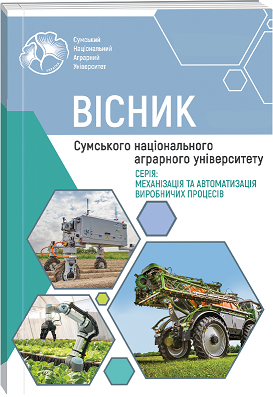STUDY OF THE QUALITY INDICATORS OF SOUR-DAIRY BEVERAGES WITH THE USE OF QUINOA FLOUR
Abstract
Quinoa is widely used by vegetarians and vegans, it does not contain gluten. Despite its widespread use, there is little research on fermented beverages with the addition of quinoa flour. The aim of this article. Justification of the introduction of the amount of quinoa flour into the formula of a fermented milk drink, analysis of organoleptic and physicochemical indicators, improvement of the technology of a fermented milk drink with the addition of a plant component. Research methods. Research methods are organoleptic, physico-chemical, mathematical processing of experimental data using computer technologies. Results. The sensory analysis of the samples was similar in most indicators. The tasters liked the sweet, sour-milk, slightly spicy taste of the first sample. The second sample had an intense floury smell, taste and received low scores. To achieve these goals, it was worth studying the physico-chemical parameters of the product. During the fermentation of samples with quinoa flour, the pH decreases by 1,87 and 2,5 respectively. The viscosity of samples with quinoa flour increased during fermentation, and that of the control decreased. The same trend was observed for the indicator of moisture retention capacity. The presented results of microbiological studies show that all indicators of product safety are within normal limits. Conclusions and discussion. The developed fermented milk drink with the introduction of 25% quinoa flour most meets the requirements of consumers and will allow to expand the existing assortment. The scientific novelty of the obtained results lies in the fact that for the first time quinoa flour of the districted Quartet variety was proposed as a protein recipe component of a fermented milk drink. Its influence on the physico-chemical and rheological parameters of the finished product was studied. The practical significance of the obtained results is revealed in the possibility of using the proposed technology and recipe of sour milk drink in the conditions of dairy plants without replacing the equipment.
References
2. Bhargava, A., Shukla, S., & Ohri, D. (2006). Chenopodium quinoa – an Indian perspective. Industrial Crops and Products, vol. 23. №2. рр. 73-87. https://doi.org/10.1016/j.indcrop.2005.04.002
3. Bianchi, F., Rossi, E. A., Gomes, R. G., & Sivieri, K. (2014). Potentially symbiotic fermented beverage with aqueous extracts of quinoa (Chenopodium quinoa Willd) and soy. Food Science and Technology International, vol. 21. № 6. рр. 403-415. https://doi.org/10.1177/1082013214540672
4. Dallagnol, A. M., Pescuma, M., De Valdez, G. F., & Rollán, G. (2013). Fermentation of quinoa and wheat slurries by Lactobacillus plantarum CRL 778: proteolytic activity. Applied Microbiology and Biotechnology, vol. 97. № 7. рр. 3129-3140. https://doi.org/10.1007/s00253-012-4520-3
5. Daraz O., Farooq. U., Shafi. A., Hayat. K., & Khan. M. Z. (2020). Development of Quinoa (CHENOPODIUM QUINOA) supplemented cookies. Agric. Sci. J., vol. 2. № 1. рр. 56-66. https://doi.org/10.56520/asj.v2i1.40
6. Gordillo–Bastidas, E., Díaz–Rizzolo, D. A., Roura, E., Massanés, T., & Gomis, R. (2016). Quinoa (Chenopodium quinoa Willd), from nutritional value to potential health benefits: An integrative review. Journal of Nutrition and Food Science, vol. 6. № 3. https://doi.org/10.4172/2155-9600.100049
7. Guixing Ren, Cong Teng, Xin Fan, Shengyuan Guo, Gang Zhao, Lizhen Zhang, Zou Liang, & Peiyou Qin. (2023). Nutrient composition, functional activity and industrial applications of quinoa (Chenopodium quinoa Willd.). Food Chemistry, vol. 410. рр. 135290. https://doi.org/10.1016/j.foodchem.2022.135290.
8. Karovičová, J., Kohajdová, Z., Lauková, M., Minarovičová, L., Greifová, M., Hojerová, J., & Greif, G. (2020). Utilisation of Quinoa for development of fermented beverages. Potravinarstvo Slovak Journal of Food Sciences, vol. 14. рр. 465-472. https://doi.org/10.5219/1323
9. Kaur, I. & Tanwar, B. (2016). Quinoa beverages: Formulation, processing and potential health benefits. Rom. J. Diabetes Nutr. Metab. Dis, vol. 23. рр. 215-225. http://rjdnmd.org/index.php/RJDNMD/article/view/99.
10. Kaur, I., & Tanwar, B. (2016). Quinoa beverages: formulation, processing and potential health benefits. Romanian Journal of Diabetes Nutritiron and Metabolic Diseases, vol. 23. № 2. рр. 215-225. https://doi.org/10.1515/rjdnmd-2016-0026
11. Kaur, I., & Tanwar, B. (2016). Quinoa beverages: formulation, processing and potential health benefits. Romanian Journal of Diabetes Nutritiron and Metabolic Diseases, vol. 23. № 2. рр. 215-225. https://doi.org/10.1515/rjdnmd-2016-0026
12. Kumar, R, Sharma, G, Sharma, A, Kumar, A, Shukla, S.K., Paul, B, Pandey, N.K., & Singh A. (2022). Сessible bioactive compounds and nutritional profile of quinoa (Chenopodiumquinoa willd). Marumegh, vol. 7. № 3. рр. 10-15.
13. Lorusso, A., Coda, R., Montemurro, M., & Rizzello, C. G. (2018). Use of selected lactic acid bacteria and quinoa flour for manufacturing novel yogurt-like beverages. Foods, vol. 4. № 7. рр. 51. https://doi.org/10.3390/foods 7040051
14. Ludena Urquizo, F.E., García Torres, S.M., Tolonen, T, Jaakkola, М., Pena-Niebuhr, M. G., Wright, A. V., Repo-Carrasco-Valencia, R., Korhonen, H., Plumed-& Ferrer, C. (2017). Development of a fermented quinoa-based beverage. Food Sci Nutr, vol. 5. № 3. рр. 602-608. https://doi.org/10.1002/fsn3.436
15. Magala, M., Kohajdová, Z., Karovičová, J., Greifová, M., & Hojerová, J. (2015). Application of lactic acid bacteria for production of fermented beverages based on rice flour. Czech Journal of Food Sciences, vol. 33. № 5. рр. 458-463. https://doi.org/10.17221/74/2015-CJFS
16. Ndife, J., Linus-Chibueseh, A., & Bseocha, C. V. (2019). Development and evaluation of a non-dairy probiotic beverage from brown rice (Oryzae sativa). Journal of Food and Processing Technology, vol. 10. № 8. рр. 1-16. https://doi.org/10.35248/2157-7110.19.10.806
17. Nisar, M., More, D. R., Zubair, S., & Hashmi, S. I. (2017). Physico-chemical and nutritional properties of quinoa seed: A review. Journal of Pharmacognosy and Phytochemistry, vol. 6. № 5. рр. 2067-2069.
18. Pineli, L.L.O., Botelho, R.B.A., Zandonadi, R.P., Solorzano, J.L., de Oliveira, G.T., Reis, C.E.G., & Teixeira, D.S. (2015). Low glycemic index and increased protein content in a novel quinoa milk. LWT-Food Sci. Technol, vol. 63. №2. рр. 1261-1267. https://doi.org/10.1016/j.lwt.2015.03.094
19. Rizzello, C. G., Lorusso, A., Montemurro, M., & Gobbetti, M. (2016). Use of sourdough made with quinoa (Chenopodium quinoa) flour and autochthonous selected lactic acid bacteria for enhancing the nutritional, textural and sensory features of white bread. Food microbiology, vol. 56. рр. 1-13. https://doi.org/10.1016/j.fm.2015.11.018
20. Rollán, G. C., Gerez, C. L., & LeBlanc, J. G. (2019). Lactic fermentation as a strategy to improve the nutritional and functional values of pseudocereals. Frontiers in Nutrition, vol. 6. рр. 1-16. https://doi.org/10.3389/fnut.2019,00098
21. Shobeiri, M., Elhami Rad, A. H., Sheikholeslami, Z., Zenozian, M. S., & Saeedi Asl, M. R. (2023). The effects of quinoa and okra incorporation on the quality of diet cake. Food science and technology international = Ciencia y tecnologia de los alimentos internacional, рр. 10820132221140615. https://doi.org/10.1177/10820132221140615
22. Sokolova, Ye.B., Kovalevska, N.S., & Spodar, K.V. (2021). Pidvyshchennia kharchovoi tsinnosti miasnykh sichenykh napivfabrykativ za rakhunok dodavannia nasinnia kinoa. [Increasing nutritional value of chopped meat semi-finished products dy adding seeds quinoa]. Visnyk umanskoho natsionalnoho universytetu sadivnytstva. №1. рр. 91-95. https://doi.org/10.31395/2310-0478-2021-1-91-95(in Ukrainian).
23. Sokolovska, O.H., Valevska, L.O., & Shulianska, A.O. (2020). Biolohichna tsinnist zernovykh superfudiv. [Biological value of grain superfoods]. Vcheni zapysky TNU imeni V.I. Vernadskoho. Seriia: tekhnichni nauky, 2020. T. 31(70). Ch. 2. № 1. рр. 166-120. https://doi.org/10.32838/2663-5941/2020.1-2/21 (in Ukrainian).
24. Tang, Y. O., & Tsao, R. (2017). Phytochemicals in quinoa and amaranth grains and their antioxidant, anti-inflammatory, and potential health beneficial effects: a review. Molecular Nutrition & Food Research, vol. 61. № 7. https://doi.org/10.1002/mnfr.201600767
25. Tang, Y. O., & Tsao, R. (2017). Phytochemicals in quinoa and amaranth grains and their antioxidant, anti-inflammatory, and potential health beneficial effects: a review. Molecular Nutrition & Food Research, vol. 61. № 7. https://doi.org/10.1002/mnfr.201600767
26. Ujiroghene, O. J., Liu, L., Zhang, S., Lu, J., Zhang, C., Pang, X., & Lv, J. (2019). Potent α–amylase inhibitory activity of sprouted quinoa-based yoghurt beverages fermented with elected anti–diabetic strains of lactic acid bacteria. RSC Advances, vol. 9. рр. 9486-9493. https://doi.org/10.1039/C8RA10063B
27. Xueyong Zhou, Ting Yгу, Zuofu Wei, Liyan Yang, Lihong Zhang, Baomei Wu, Weizhong Liu, & Peng Peng. (2023). Teamaking technology by using quinoa raw materials. Food Science and Technology, vol. 43. https://doi.org/10.1590/fst.117422
28. Xueyong Zhou, Xin Yu, Liyan Yang, Zuofu Wei, Lihong Zhang, & Jianqiang Gao. (2023). A new method for preparing the instant quinoa by piecewise gelatinization. Food Sci. Technol, vol. 43. https://doi.org/10.1590/fst.106822
29. Zannini, E., Jeske, S., Lynch, K. M., & Arendt, E. K. (2018). Development of novel quinoa-based yoghurt fermented with dextran producer Weissella MG1. International Journal of Food Microbiology, vol. 268. pp. 19-26. https://doi.org/10.1016/j.foodmicro.2018.01.001
30. Zannini, E., Jeske, S., Lynch, K. M., & Arendt, E. K. (2018). Development of novel quinoa-based yoghurt fermented with dextran producer Weissella cibaria MG1. International journal of food microbiology, vol. 268. рр. 19-26. https://doi.org/10.1016/j.ijfoodmicro.2018.01.001

 ISSN
ISSN  ISSN
ISSN 



